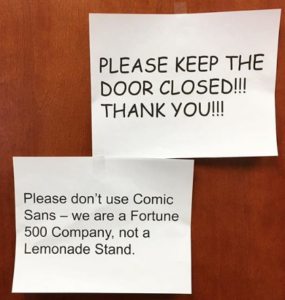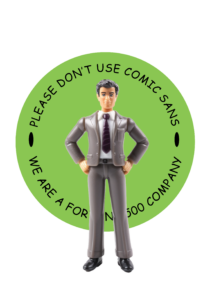Project idea:
Celebrating uselessness and messiness
This project will produce something physical and poetic, which brings the future within reach (books with photography/illustrations, interactive posters, installation). But the design itself focuses on an ambiguous space in between, where change happens, behind the misty air.
THE OBJECT(S)
Designed object
I just finished reading the book “Speculative Everything: Design, Fiction, and Social Dreaming” and found a thread connecting my interests. The book suggests that the world does not dream anymore, but designers can inspire new dreams. As we lose the ability to imagine an alternative future, designers can make themselves useful by presenting possibilities, by making speculative concepts. It’s not about fixing today’s problems or predicting the future, but presenting a fictional future that invites viewers to actively engage and debate about the future they do and do not want.
This object should be solid, real, as a device to bring the future into the now. It should also offer plenty of negative space and ambiguity for personal interpretation and try not to push moral judgements.
Dreamlike object
When I was a kid I was obsessed with fairy tales by the Japanese author Naoko Awa. In one of her stories, a girl received a blue paint, as blue as the sky, She painted her balcony with the blue paint, and the balcony disappeared in the sky, leaving her floating midair. In an interview, she mentioned that she writes about the space in between reality and dream, the blurry line is what fascinated her. After reading the book Speculative Everything, I decided to incorporate this kind of ambiguous hybrid between dream and reality. I like the idea of something fictional, even adorable.
Liminal object
A rite of passage is a ritual that marks someone’s transition from one social or cultural state to another. It involves three stages: separation, liminality, and incorporation.
Can speculative design bring people to a state of liminality? This is the time when you float between present and the future, (or between the current future and the new future?). It is a space that is neither here nor there.
Features of Liminality:
- Ambiguity: During liminality, social norms and roles are often suspended or challenged, leading to uncertainty and experimentation.
- Communitas: This is a concept explored by Victor Turner, referring to the sense of camaraderie and equality that often emerges during liminal
Inspiration: The Arrival (picture book)
After reading a wordless illustration book The Arrival, I felt very emotionally engaged with the story, particularly because of it’s realistic art style grounding the experience, and bazar, abstract portrait of life, giving it room for interpretation. A tarot reading is more exciting than a weather forecast. “In order to best understand what it is like to travel to a new country, I wanted to create a fictional place equally unfamiliar to readers of any age or background”“I am often searching in each image for things that are odd enough to invite a high degree of personal interpretation, and still maintain a ring of truth.”
THE THEME: Power
Rhythms in unpredictability
After reading the first few chapters of The Mushroom at the End of the World, I have new appreciation of the narrative outside “progress”, how to look around, rather than ahead. Precarity, indeterminacy, is not abnormal things to life, it’s actually the systematicity we seek. (Page 20).
Just because something is hard to measure, or non-scalable, does not mean they don’t exist and don’t matter.
Good and Bad
Things are hard to define because categories are momentary and unstable, they emerge with encounters. I would like to see if values are also momentary and unstable, how things can transit between useful and useless, good and bad.
I never know how to tell if a piece of jade is good or not, for some varieties, you want them have a white core and a brown shell; for some varieties, you want them completely even coloured; for some, you want them to have cloudy patterns; for some other types, those patterns are considered “impurities”. These are stones, the “good” and “bad” felt so made-up.
What is good taste
Using aesthetics as a subject. Look at conflicts or adoptions of aesthetics to see what future we want to see.
Minimalist corporate identity, with Helvetica and the trustworthy dark blue; versus the wild and messy meme aesthetics that celebrate chaos and personalities.
The latter is a response to the “progress” of the former, trying to use flesh to beat the machines.
Interestingly, we also see corporates adapting to more “edgy” aesthetics lately, from the Corporate Memphis aesthetics to consumer brands making fun of themselves. As Mark Fisher mentioned in his book Capitalist Realism, resistance to capitalism can always be absorbed into the capitalist world, reducing the essence of rebellion to purchasable fragments, to generate even more revenues (Fisher, 2009).
Let’s say weeds are something that the capitalist machine cannot find use of? As the weeds try to occupy the assets, the weeds turn into assets.
As a packaging illustrator, I illustrate to add “joy” “authenticity” “coherence with brand” and “appetising colours” to a pack ofbiscuits. Like making a flower arrangement, I create a beautiful work, but I know, I took the future of the flowers away. Taste is a reflection of power, and can I design a fictional tool for the dreamers outside the machine?
What about a gallery of “Rubbish”?
I think this is a bit chaotic at the moment. Hopefully I will have more idea about what I want to do soon!
p.s.
 .
. 
On the right is a sticker I made about fancy companies freaking out over a silly font. Do silly fonts have the power to invalidate a Fortune 500?

